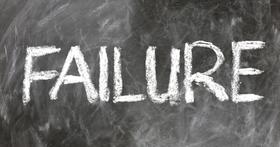For the 2025-26 school year, there are 3 public schools serving 819 students in Burlington School District. This district's average testing ranking is 6/10, which is in the top 50% of public schools in Kansas.
Public Schools in Burlington School District have an average math proficiency score of 31% (versus the Kansas public school average of 31%), and reading proficiency score of 33% (versus the 33% statewide average).
Minority enrollment is 12% of the student body (majority Hispanic), which is less than the Kansas public school average of 39% (majority Hispanic).
Overview
This School District
This State (KS)
# Schools
3 Schools
1,338 Schools
# Students
819 Students
477,393 Students
# Teachers
69 Teachers
33,397 Teachers
Student-Teacher Ratio
12:1
12:1
Student By Grade
District Rank
Burlington School District, which is ranked within the top 50% of all 286 school districts in Kansas (based off of combined math and reading proficiency testing data) for the 2022-2023 school year.
The school district's graduation rate of 90-94% has increased from 90% over five school years.
Overall District Rank
#117 out of 286 school districts
(Top 50%)
(Top 50%)
Math Test Scores (% Proficient)
31%
31%
Reading/Language Arts Test Scores (% Proficient)
34%
32%
Science Test Scores (% Proficient)
30-34%
31%
Graduation Rate
(21-22)90-94%
89%
Students by Ethnicity:
Diversity Score
0.22
0.57
% American Indian
1%
1%
% Asian
n/a
3%
% Hispanic
5%
22%
% Black
n/a
7%
% White
88%
61%
% Hawaiian
n/a
n/a
% Two or more races
6%
6%
All Ethnic Groups
District Revenue and Spending
The revenue/student of $24,048 is higher than the state median of $16,284. The school district revenue/student has stayed relatively flat over four school years.
The school district's spending/student of $23,623 is higher than the state median of $17,200. The school district spending/student has stayed relatively flat over four school years.
Total Revenue
$20 MM
$7,774 MM
Spending
$19 MM
$8,211 MM
Revenue / Student
$24,048
$16,284
Spending / Student
$23,623
$17,200
Best Burlington School District Public Schools (2025-26)
School
(Math and Reading Proficiency)
(Math and Reading Proficiency)
Location
Quick Facts
Rank: #11.
Burlington Elementary School
(Math: 50-54% | Reading: 50-54%)
Rank:
Rank:
9/
Top 20%10
706 Niagara Street
Burlington, KS 66839
(620) 364-8882
Burlington, KS 66839
(620) 364-8882
Gr: PK-4 | 316 students Student-teacher ratio: 13:1 Minority enrollment: 11%
Rank: #22.
Burlington Middle School 5 - 8
(Math: 22% | Reading: 30%)
Rank:
Rank:
4/
Bottom 50%10
720 Cross St.
Burlington, KS 66839
(620) 364-2156
Burlington, KS 66839
(620) 364-2156
Gr: 5-8 | 247 students Student-teacher ratio: 11:1 Minority enrollment: 13%
Rank: #33.
Burlington High School
(Math: 25-29% | Reading: 15-19%)
Rank:
Rank:
3/
Bottom 50%10
830 Cross St
Burlington, KS 66839
(620) 364-8672
Burlington, KS 66839
(620) 364-8672
Gr: 9-12 | 256 students Student-teacher ratio: 11:1 Minority enrollment: 11%
Frequently Asked Questions
How many schools belong to Burlington School District?
Burlington School District manages 3 public schools serving 819 students.
What is the rank of Burlington School District?
Burlington School District is ranked #124 out of 286 school districts in Kansas (top 50%) based off of combined math and reading proficiency testing data for the 2022-2023 school year.
What is the racial composition of students in Burlington School District?
88% of Burlington School District students are White, 6% of students are Two or more races, 5% of students are Hispanic, and 1% of students are American Indian.
What is the student/teacher ratio of Burlington School District?
Burlington School District has a student/teacher ratio of 12:1, which is lower than the Kansas state average of 14:1.
What is Burlington School District's spending/student ratio?
The school district's spending/student of $23,623 is higher than the state median of $17,200. The school district spending/student has stayed relatively flat over four school years.
Recent Articles

School Vouchers: Updated Pros and Cons (2025 Review)
Comprehensive 2025 analysis of school vouchers, weighing benefits and challenges for families, funding, outcomes, and policy directions.

Benefits and Drawbacks of Homework in 2025
Explore updated 2025 insights on homework鈥檚 benefits, drawbacks, mental health impact, best practices, and policy trends in U.S. public schools.

Charter Schools vs Public Schools 2025: Key Differences & Trends
Explore updated 2025 insights comparing charter schools vs public schools, enrollment, academic outcomes, funding, and real-world examples for families and educators.





